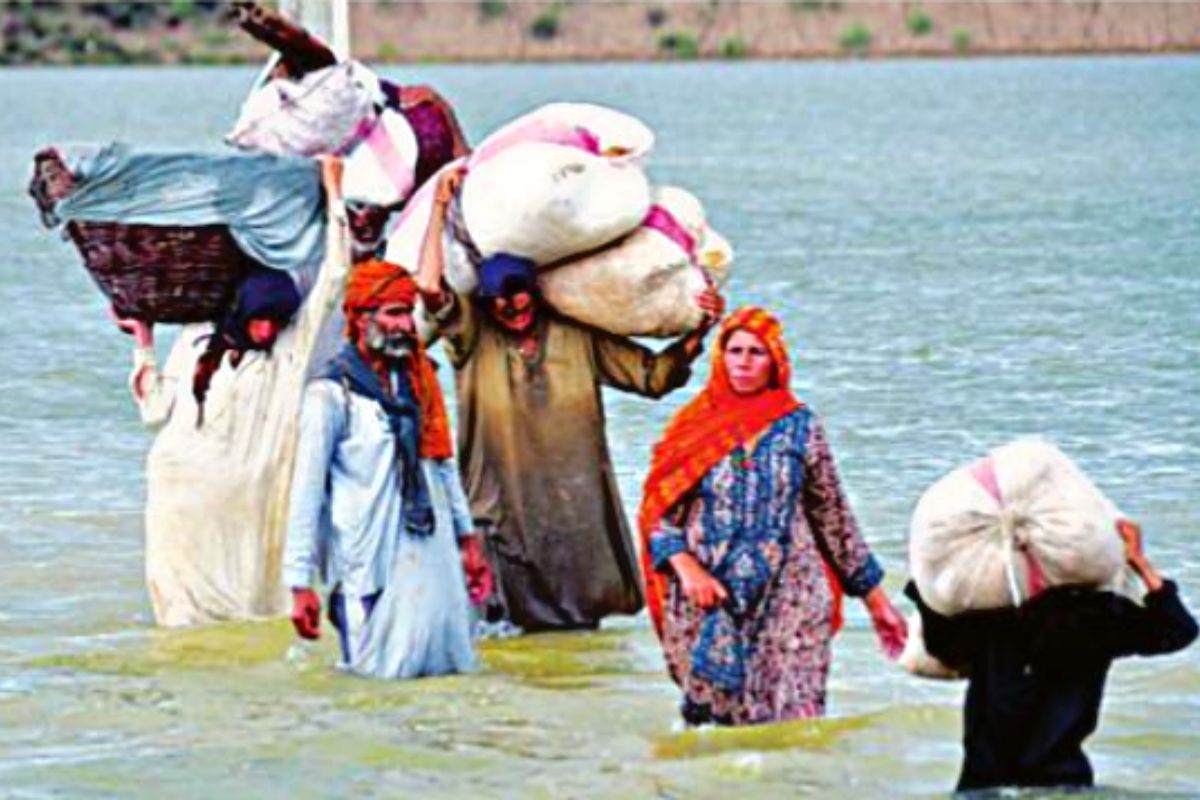Make no mistake, Pakistan is currently in the midst of the greatest ‘natural’ disaster it has ever experienced. According to the National Disaster Management Authority (NDMA), over 900 people are dead, close to 300,000 homes have been partially destroyed and about 200,000 homes have been completely destroyed. If we estimate that around six people live in a household (and this is a conservative estimate) then 30 million people — nearly 15 per cent of Pakistan’s entire population — are currently homeless or living without adequate shelter. This same estimate has also been quoted by ministers Sherry Rehman and Ahsan Iqbal. Estimates are all we have at the moment, as the extent of the flooding is such that the magnitude of the destruction and loss will only become clear once the waters recede.
It is a disaster that will reveal itself in stages and will have repercussions far beyond the affected areas. But it is already clear that the scale of this disaster is many times greater than that of the 2010 floods which, devastating as they were, were riverine floods. This time, the water is everywhere. And it is relentless. The length and breadth of Sindh is inundated from Karachi to Kashmore, and the devastation is such that every previous flood experienced in living memory pales in comparison, with some areas having received more rain in a short period of time than the entire province usually receives during the duration of the monsoons. As a result, while in 2010 we saw the left bank areas of the Indus badly hit, this time the impact is felt all over the province.
Advertisement
Rescue and relief simply cannot cope, and as waters stagnate and people are forced to shelter under the open skies or else in hurriedly established relief camps, the dangers of water and mosquito-borne diseases is ever-present. Infrastructure has also been badly damaged countrywide, and this is especially tragic when it comes to Balochistan which was the most underdeveloped province of Pakistan even before the floods hit. With large parts of the province cut off from all access, the true magnitude of the destruction will not be clear for many months but if NDMA figures are anything to go by, over 710 kilometres of metalled roads have been completely swept away. In absolute terms, however, it is the road system of Sindh that has been worst hit, with over 2,200km of roads destroyed.
And the worst is yet to come: consider the damage to agriculture and what that portends. In Sindh alone, as per Chief Minister Murad Ali Shah, the entire cotton crop has been lost as has most of the sugarcane crop, and orchards have sustained heavy damage as well. This doesn’t only spell doom for farmers, but also the textile industry, a major source of exports, which relies on this crucial raw material. Rice mills and rice exporters will face the same crisis and the overall agricultural losses also mean that the entire agribusiness chain has been practically wiped out, from middlemen to pesticide and fertiliser manufacturers, sales agents, and other staff.
To make matters worse, it is uncertain if the wheat plantation will be able to go ahead given not only the floods but also the losses suffered by farmers, most of whom live from crop to crop and season to season. Here I’m not talking about large agriculturists who may have the ability to sustain a season of losses, but the smaller farmers who simply do not have the resources to survive a lost year. Hundreds of thousands of heads of livestock have also been lost which amounts to an irreplaceable loss for communities and will make rebuilding that much harder. In economic terms the cumulative losses mean a huge blow to Pakistan’s GDP and the very real possibility of massive food shortages. Couple that with the expected mass migration to urban centres and you can easily see what the near future will hold.
In Waseb — and this is likely true for other areas as well — the disaster has been compounded by a tragically flawed development model where the natural waterways and channels leading from the mountains to the Indus have been disrupted by constructions of various types, and the traditional earthworks that channelled such floods were allowed to fall into disrepair. Granted, the magnitude of the rainfall is such that perhaps no such channels would have sufficed, but there is little doubt that some of the damage could have been mitigated had Pakistan as a nation not been so addicted to ‘development’ which ignores the lay of the land. To see the results of this, you need look no further than Swat, which has seen houses, restaurants and hotels that were built right on the riverbank in blatant violation of regulations, swept away by the torrents. Can we rebuild? Can we pick up the pieces and carry on? And most crucially, will we ever learn?
A version of this story appears in the print edition of the August 30, 2022, issue.











